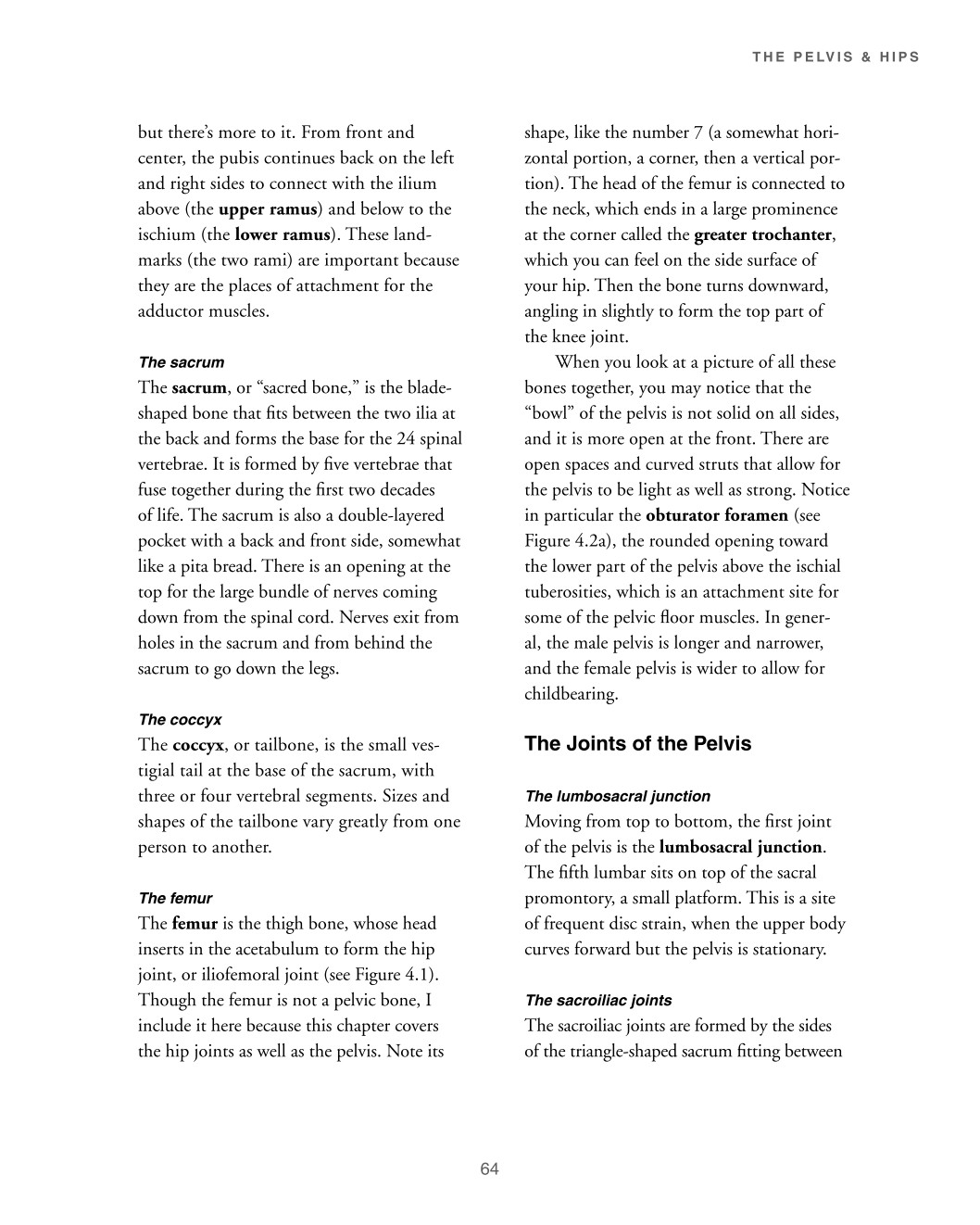

THE PELVIS & HIPS
but there’s more to it. From front and center, the pubis continues back on the left and right sides to connect with the ilium above (the upper ramus) and below to the ischium (the lower ramus). These land- marks (the two rami) are important because they are the places of attachment for the adductor muscles. The sacrum The sacrum, or “sacred bone,” is the blade- shaped bone that fits between the two ilia at the back and forms the base for the 24 spinal vertebrae. It is formed by five vertebrae that fuse together during the first two decades of life. The sacrum is also a double-layered pocket with a back and front side, somewhat like a pita bread. There is an opening at the top for the large bundle of nerves coming down from the spinal cord. Nerves exit from holes in the sacrum and from behind the sacrum to go down the legs. The coccyx The coccyx, or tailbone, is the small ves- tigial tail at the base of the sacrum, with three or four vertebral segments. Sizes and shapes of the tailbone vary greatly from one person to another. The femur The femur is the thigh bone, whose head inserts in the acetabulum to form the hip joint, or iliofemoral joint (see Figure 4.1). Though the femur is not a pelvic bone, I include it here because this chapter covers the hip joints as well as the pelvis. Note its
shape, like the number 7 (a somewhat hori- zontal portion, a corner, then a vertical por- tion). The head of the femur is connected to the neck, which ends in a large prominence at the corner called the greater trochanter, which you can feel on the side surface of your hip. Then the bone turns downward, angling in slightly to form the top part of the knee joint. When you look at a picture of all these bones together, you may notice that the “bowl” of the pelvis is not solid on all sides, and it is more open at the front. There are open spaces and curved struts that allow for the pelvis to be light as well as strong. Notice in particular the obturator foramen (see Figure 4.2a), the rounded opening toward the lower part of the pelvis above the ischial tuberosities, which is an attachment site for some of the pelvic floor muscles. In gener- al, the male pelvis is longer and narrower, and the female pelvis is wider to allow for childbearing. The Joints of the Pelvis The lumbosacral junction Moving from top to bottom, the first joint of the pelvis is the lumbosacral junction. The fifth lumbar sits on top of the sacral promontory, a small platform. This is a site of frequent disc strain, when the upper body curves forward but the pelvis is stationary. The sacroiliac joints The sacroiliac joints are formed by the sides of the triangle-shaped sacrum fitting between
64